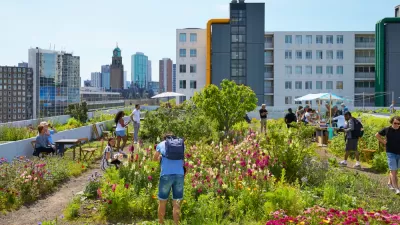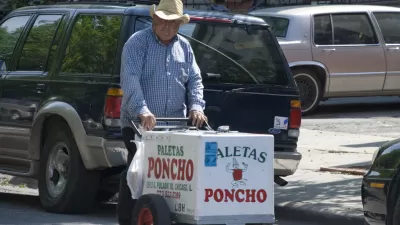Adam Davies writes about the results of an experimental policing project in the Netherlands that seems to demonstrate that improvements to the pedestrian environment have reduced crime in Rotterdam.
The theory of improving the appearance of the urban environment in an effort to improve public safety and reduce crime, known as the "broken windows theory", has been vigorously debated since its appearance in a 1982 article by social scientists James Q. Wilson and George L. Kelling. According to Davies, the results of a recent policing experiment in Rotterdam may provide "some much needed proof for this theory."
The project, called ‘The Neighbourhood takes Charge', focused on addressing quality of life improvements identified by local residents, of which the top three concerns were street cleaning, dog mess, and reducing traffic speeds.
According to Davies, "police started focusing on making streets cleaner, removing graffiti, speed gunning motorists, increasing police visibility and improving the public realm. But rather than neglecting serious crimes, they actually saw some dramatic reductions in all sorts of crime over a two year period, including: drug crime dropped by 30%; burglary dropped by 22%; vandalism dropped by 31%; traffic offences dropped by 19%; theft dropped by 11%; violence dropped by 8%."
It's unclear from Davies' article how much of the reduction in crime can be attributed to the individual efforts he mentions, such as merely increasing police visibility.
FULL STORY: Improving Street Walkability Reduces Crime

Alabama: Trump Terminates Settlements for Black Communities Harmed By Raw Sewage
Trump deemed the landmark civil rights agreement “illegal DEI and environmental justice policy.”

Planetizen Federal Action Tracker
A weekly monitor of how Trump’s orders and actions are impacting planners and planning in America.

Why Should We Subsidize Public Transportation?
Many public transit agencies face financial stress due to rising costs, declining fare revenue, and declining subsidies. Transit advocates must provide a strong business case for increasing public transit funding.

Judge Orders Release of Frozen IRA, IIJA Funding
The decision is a victory for environmental groups who charged that freezing funds for critical infrastructure and disaster response programs caused “real and irreparable harm” to communities.

‘Clybourne Park’ Sets Stage for Housing Equity Discussions
Clybourne Park, a play exploring race, real estate, and community tensions, can set the stage for discussion on the lasting impacts of housing discrimination, gentrification, and the fight for affordability.

Understanding Road Diets
An explainer from Momentum highlights the advantages of reducing vehicle lanes in favor of more bike, transit, and pedestrian infrastructure.
Urban Design for Planners 1: Software Tools
This six-course series explores essential urban design concepts using open source software and equips planners with the tools they need to participate fully in the urban design process.
Planning for Universal Design
Learn the tools for implementing Universal Design in planning regulations.
Caltrans
Smith Gee Studio
Institute for Housing and Urban Development Studies (IHS)
City of Grandview
Harvard GSD Executive Education
Toledo-Lucas County Plan Commissions
Salt Lake City
NYU Wagner Graduate School of Public Service





























